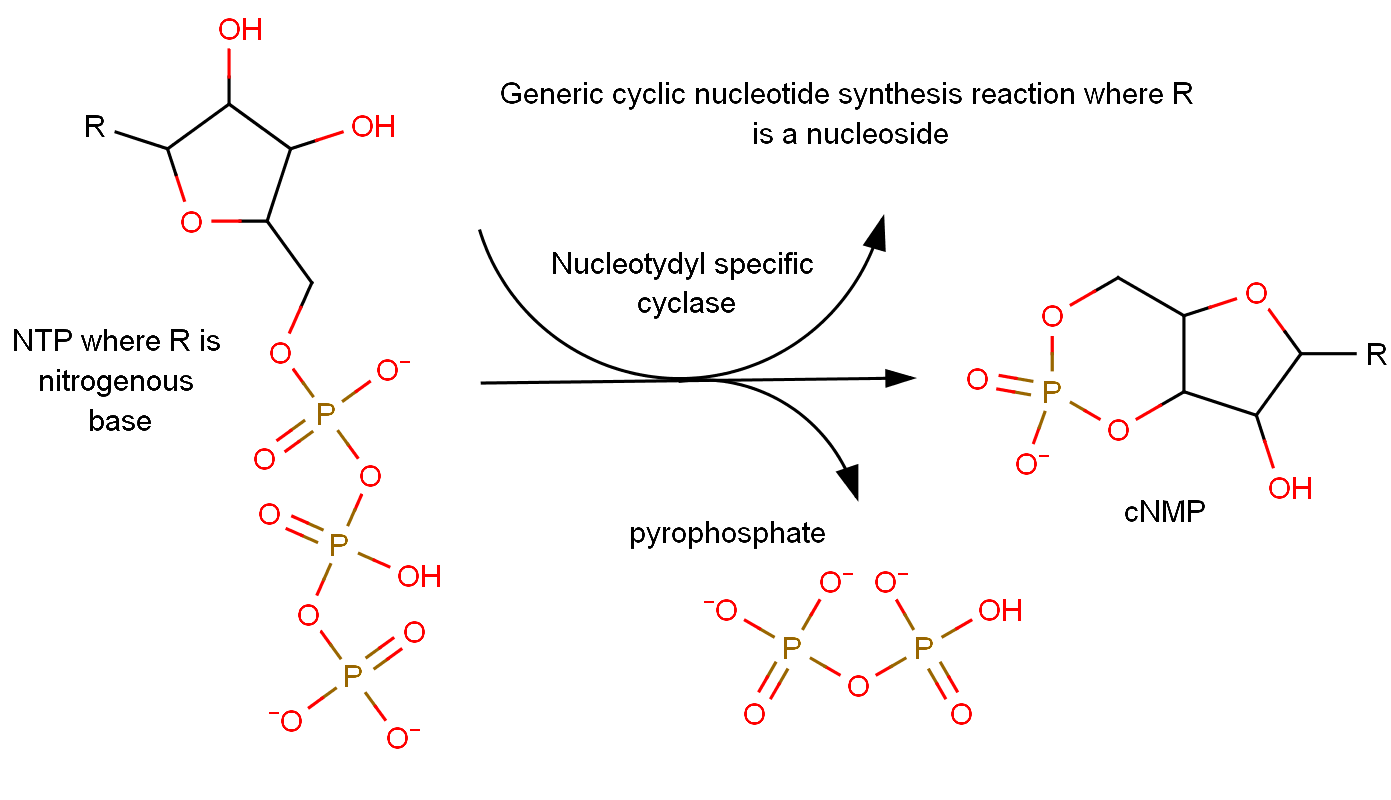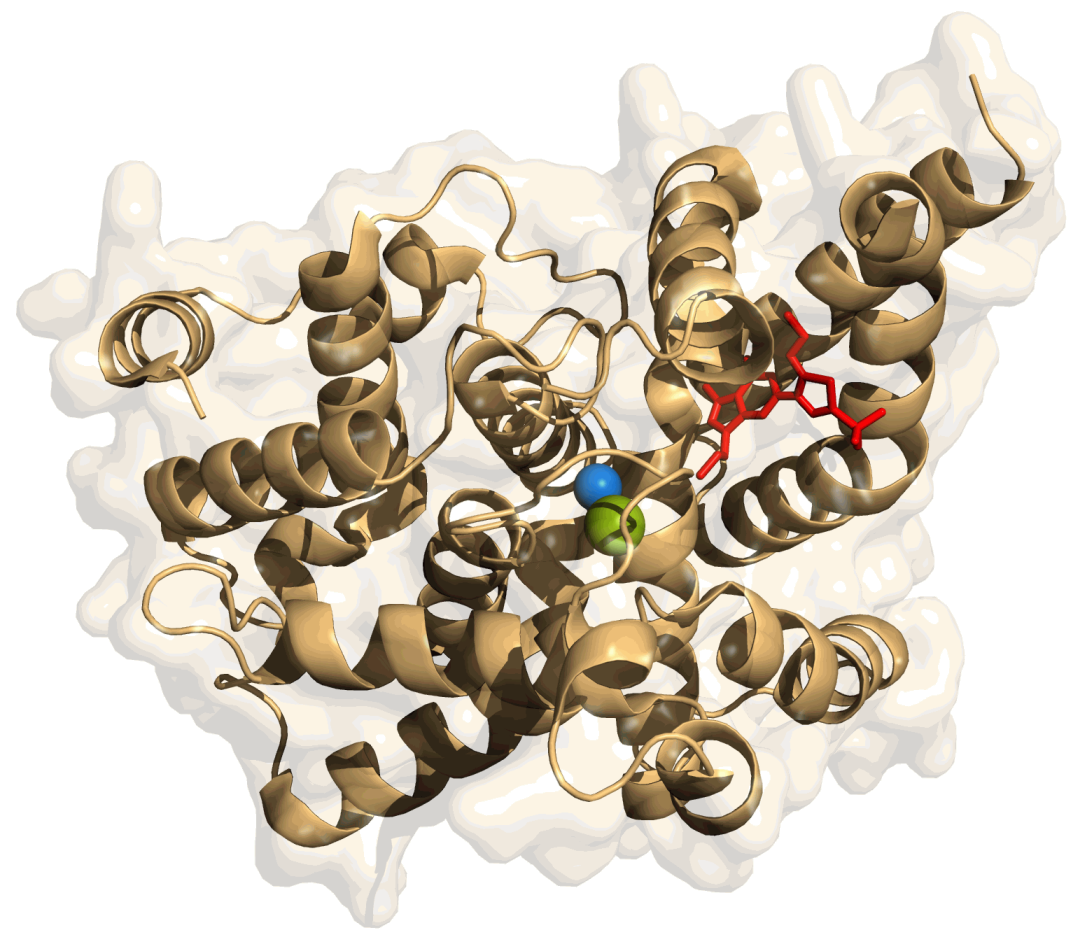|
Phosphodiesterases
A phosphodiesterase (PDE) is an enzyme that breaks a phosphodiester bond. Usually, ''phosphodiesterase'' refers to cyclic nucleotide phosphodiesterases, which have great clinical significance and are described below. However, there are many other families of phosphodiesterases, including phospholipases phospholipase C, C and phospholipase D, D, autotaxin, sphingomyelin phosphodiesterase, DNases, RNases, and restriction endonucleases (which all break the phosphodiester backbone of DNA or RNA), as well as numerous less-well-characterized small-molecule phosphodiesterases. The cyclic nucleotide phosphodiesterases comprise a group of enzymes that degrade the phosphodiester bond in the second messenger molecules cyclic adenosine monophosphate, cAMP and Cyclic guanosine monophosphate, cGMP. They regulate the localization, duration, and amplitude of cyclic nucleotide signaling within subcellular domains. PDEs are therefore important regulators of signal transduction mediated by these s ... [...More Info...] [...Related Items...] OR: [Wikipedia] [Google] [Baidu] |
PDE1
Phosphodiesterase 1, PDE1, EC 3.1.4.1, systematic name oligonucleotide 5-nucleotidohydrolase) is a phosphodiesterase enzyme also known as calcium- and calmodulin-dependent phosphodiesterase. It is one of the 11 families of phosphodiesterase (PDE1-PDE11). Phosphodiesterase 1 has three subtypes, PDE1A, PDE1B and PDE1C which divide further into various isoforms. The various isoforms exhibit different affinities for Cyclic adenosine monophosphate, cAMP and cyclic guanosine monophosphate, cGMP. Discovery The existence of the Ca2+-stimulated Phosphodiesterase 1 was first demonstrated by Cheung (1970), Kakiuchi and Yamazaki (1970) as a result of their research on bovine brain and rat brain respectively. It has since been found to be widely distributed in various mammalian Biological tissue, tissues as well as in other eukaryotes. It is now one of the most intensively studied member of the Phosphodiesterase, PDE superfamily of enzymes, which today represents 11 gene families, and the best ... [...More Info...] [...Related Items...] OR: [Wikipedia] [Google] [Baidu] |
Cyclic Nucleotide
A cyclic nucleotide (cNMP) is a single-phosphate nucleotide with a cyclic bond arrangement between the sugar and phosphate groups. Like other nucleotides, cyclic nucleotides are composed of three functional groups: a sugar, a nitrogenous base, and a single phosphate group. As can be seen in the cyclic adenosine monophosphate (cAMP) and cyclic guanosine monophosphate (cGMP) images, the 'cyclic' portion consists of two bonds between the phosphate group and the 3' and 5' hydroxyl groups of the sugar, very often a ribose. Their biological significance includes a broad range of protein-ligand interactions. They have been identified as secondary messengers in both hormone and ion-channel signalling in eukaryotic cells, as well as allosteric effector compounds of DNA binding proteins in prokaryotic cells. cAMP and cGMP are currently the most well documented cyclic nucleotides, however there is evidence that cCMP (with cytosine) is also involved in eukaryotic cellular messagin ... [...More Info...] [...Related Items...] OR: [Wikipedia] [Google] [Baidu] |
Rolipram
Rolipram is a selective phosphodiesterase-4 inhibitor discovered and developed by Schering AG as a potential antidepressant drug in the early 1990s. It served as a prototype molecule for several companies' drug discovery and development efforts. Rolipram was discontinued after clinical trials showed that its therapeutic window was too narrow; it could not be dosed at high enough levels to be effective without causing significant gastrointestinal side effects. Rolipram has several activities that make it a continuing focus for research. The etiology of many neurodegenerative diseases involves misfolded and clumped proteins which accumulate in the brain. Cells have a mechanism to dispose of such proteins called the proteasome. However, in Alzheimer's disease and some other conditions the activity of these proteasomes is impaired leading to a buildup of toxic aggregates. Research in mice suggests that rolipram has the ability to ramp up the activity of proteasomes and reduce th ... [...More Info...] [...Related Items...] OR: [Wikipedia] [Google] [Baidu] |
Benjamin Weiss (scientist)
Benjamin Weiss (January 26, 1937) is an American neuropharmacologist, Emeritus Professor of Pharmacology and Physiology at Drexel University College of Medicine. He is best known for his work with cyclic nucleotide phosphodiesterases. He was the first to propose, based on his experimental work, that selective inhibition of phosphodiesterases which are expressed differentially in all tissues, could be used as a target for drug development. His work is the basis for many marketed and developmental human drugs that selectively inhibit cyclic nucleotide phosphodiesterases. His investigations on the modulation of adrenergic responses in the pineal gland have resulted in the formation of new concepts that may explain the phenomena of drug tolerance and drug hypersensitivity. He and his laboratory were also instrumental in the development of antisense oligonucleotides and antisense RNA as pharmacological tools to study calmodulin and dopamine receptors, and as pharmacological agen ... [...More Info...] [...Related Items...] OR: [Wikipedia] [Google] [Baidu] |
Phosphodiester Bond
In chemistry, a phosphodiester bond occurs when exactly two of the hydroxyl groups () in phosphoric acid react with hydroxyl groups on other molecules to form two ester bonds. The "bond" involves this linkage . Discussion of phosphodiesters is dominated by their prevalence in DNA and RNA, but phosphodiesters occur in other biomolecules, e.g. acyl carrier proteins, Phospholipid, phospholipids and the cyclic forms of GMP and AMP (Cyclic guanosine monophosphate, cGMP and Cyclic adenosine monophosphate, cAMP). Phosphodiester Backbone of DNA and RNA Phosphodiester bonds make up the Polymer backbone, backbones of DNA and RNA. In the phosphodiester bonds of nucleic acids, a phosphate is attached to the 5' carbon of one nucleoside and to the 3' carbon of the adjacent nucleoside. Specifically, it is the phosphodiester bonds that link the Directionality (molecular biology), 3' carbon atom of one sugar molecule and the 5' carbon atom of another (hence the name 3', 5' phosphodiester linkag ... [...More Info...] [...Related Items...] OR: [Wikipedia] [Google] [Baidu] |
Benjamin Weiss (scientist)
Benjamin Weiss (January 26, 1937) is an American neuropharmacologist, Emeritus Professor of Pharmacology and Physiology at Drexel University College of Medicine. He is best known for his work with cyclic nucleotide phosphodiesterases. He was the first to propose, based on his experimental work, that selective inhibition of phosphodiesterases which are expressed differentially in all tissues, could be used as a target for drug development. His work is the basis for many marketed and developmental human drugs that selectively inhibit cyclic nucleotide phosphodiesterases. His investigations on the modulation of adrenergic responses in the pineal gland have resulted in the formation of new concepts that may explain the phenomena of drug tolerance and drug hypersensitivity. He and his laboratory were also instrumental in the development of antisense oligonucleotides and antisense RNA as pharmacological tools to study calmodulin and dopamine receptors, and as pharmacological agen ... [...More Info...] [...Related Items...] OR: [Wikipedia] [Google] [Baidu] |
Cyclic Guanosine Monophosphate
Cyclic guanosine monophosphate (cGMP) is a cyclic nucleotide derived from guanosine triphosphate (GTP). cGMP acts as a second messenger much like cyclic AMP. Its most likely mechanism of action is activation of intracellular protein kinases in response to the binding of membrane-impermeable peptide hormones to the external cell surface. Through protein kinases activation, cGMP can relax smooth muscle. cGMP concentration in urine can be measured for kidney function and diabetes detection. History Cyclic guanosine monophosphate (cGMP) research began after cGMP and cyclic adenosine monophosphate (cAMP) were identified as cellular components and potentially involved with cellular regulation. Upon the synthesis of cGMP in 1960, progress rapidly spread in the understanding of regulation and effects of cGMP. Earl W. Sutherland received the 1971 Nobel Prize in Medicine for his work with cAMP and secondary messengers. This award sparked extensive research into cAMP, while cGMP ... [...More Info...] [...Related Items...] OR: [Wikipedia] [Google] [Baidu] |
PDE4 Inhibitor
A phosphodiesterase-4 inhibitor, commonly referred to as a PDE4 inhibitor, is a drug used to block the degradative action of phosphodiesterase 4 (PDE4) on cyclic adenosine monophosphate (cAMP). It is a member of the larger family of PDE inhibitors. The PDE4 family of enzymes are the most prevalent PDE in immune cells. They are predominantly responsible for hydrolyzing cAMP within both immune cells and cells in the central nervous system. Therapeutic utility The prototypical PDE4 inhibitor is rolipram. PDE4 inhibitors are known to possess procognitive (including long term memory-improving), wakefulness-promoting, neuroprotective, and anti-inflammatory effects. Consequently, PDE4 inhibitors have been investigated as treatments for a diverse group of different diseases, including central nervous system disorders such as major depressive disorder (clinical depression), anxiety disorders, schizophrenia, Parkinson's disease, Alzheimer's disease, multiple sclerosis, attention defici ... [...More Info...] [...Related Items...] OR: [Wikipedia] [Google] [Baidu] |
CGMP
CGMP is an initialism. It can refer to: *cyclic guanosine monophosphate (cGMP) * current good manufacturing practice (cGMP) *CGMP, Cisco Group Management Protocol, the Cisco version of Internet Group Management Protocol The Internet Group Management Protocol (IGMP) is a communications protocol used by hosts and adjacent routers on IPv4 networks to establish multicast group memberships. IGMP is an integral part of IP multicast and allows the network to direct ... snooping *caseinoglycomacropeptide (CGMP) or caseinomacropeptide; see K-casein *Competitive guaranteed maximum price {{disambiguation ... [...More Info...] [...Related Items...] OR: [Wikipedia] [Google] [Baidu] |
Sildenafil
Sildenafil, sold under the brand name Viagra among others, is a medication used to treat erectile dysfunction and pulmonary hypertension, pulmonary arterial hypertension. It is also sometimes used off-label for the treatment of certain symptoms in secondary Raynaud's phenomenon. It is unclear if it is effective for treating sexual dysfunction in females. It can be taken oral administration, orally (swallowed by mouth), intravenously (injection into a vein), or through the sublingual administration, sublingual route (dissolved under the tongue). Onset when taken orally is typically within twenty minutes and lasts for about two hours. Common side effects include headaches, heartburn, and flushed skin. Caution is advised in those with cardiovascular disease. Rare but serious side effects include vision problems, hearing loss, and prolonged erection (priapism) that can lead to damage to the human penis, penis. Sildenafil should not be taken by people on Nitrovasodilator, nitri ... [...More Info...] [...Related Items...] OR: [Wikipedia] [Google] [Baidu] |
Phosphodiesterase Inhibitor
A phosphodiesterase inhibitor is a drug that blocks one or more of the five subtypes of the enzyme phosphodiesterase (PDE), thereby preventing the inactivation of the intracellular second messengers, cyclic adenosine monophosphate (cAMP) and cyclic guanosine monophosphate (cGMP) by the respective PDE subtype(s). The ubiquitous presence of this enzyme means that non-specific inhibitors have a wide range of actions, with those in the heart and lungs being some of the first to find therapeutic use. History The different forms or subtypes of phosphodiesterase were initially isolated from rat brains in the early 1970s and were soon afterward shown to be selectively inhibited in the brain and in other tissues by a variety of drugs. The potential for selective phosphodiesterase inhibitors as therapeutic agents was predicted as early as 1977 by Weiss and Hait. This prediction meanwhile has proved to be true in a variety of fields. Classification Nonselective PDE inhibitors Methylated ... [...More Info...] [...Related Items...] OR: [Wikipedia] [Google] [Baidu] |
Splice Variant
Alternative splicing, alternative RNA splicing, or differential splicing, is an alternative splicing process during gene expression that allows a single gene to produce different splice variants. For example, some exons of a gene may be included within or excluded from the final RNA product of the gene. This means the exons are joined in different combinations, leading to different splice variants. In the case of protein-coding genes, the proteins translated from these splice variants may contain differences in their amino acid sequence and in their biological functions (see Figure). Biologically relevant alternative splicing occurs as a normal phenomenon in eukaryotes, where it increases the number of proteins that can be encoded by the genome. In humans, it is widely believed that ~95% of multi-exonic genes are alternatively spliced to produce functional alternative products from the same gene but many scientists believe that most of the observed splice variants are due to spli ... [...More Info...] [...Related Items...] OR: [Wikipedia] [Google] [Baidu] |




